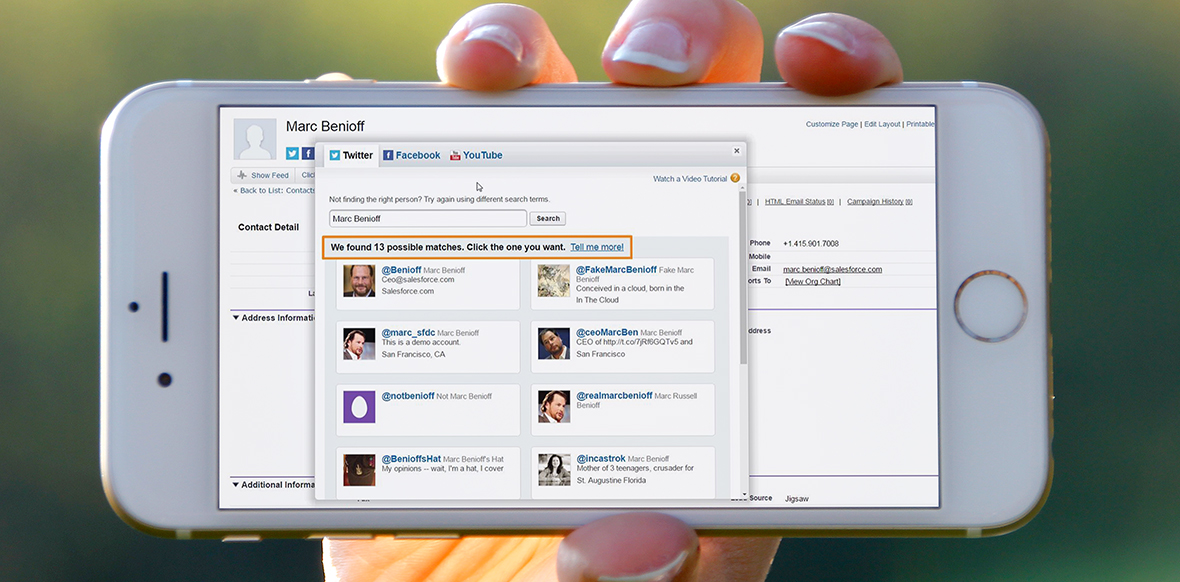 This HubSpot infographic showcases some interesting stats related to influencer marketing:
This HubSpot infographic showcases some interesting stats related to influencer marketing:
- 71 percent of consumers are more likely to make a purchase based on a social media referral
- 75 percent of consumers don’t see advertisements as being truthful
- Ticketmaster realizes $5.30 in direct revenue from additional ticket sales for each customer who posts about one of their events on Facebook
This consumer mistrust of advertising and the measurable and considerable influence that social mentions have for brands have created a frenzy of interest in influencer marketing. In this blog post we’ll look at how marketing technology plays into influencer marketing:
- Using martech to identify your influencers
- Leveraging martech to connect with key influencers and help them get the word out
- Potential pitfalls to watch out for in martech influencer marketing
But first, let’s define influencer marketing so we’re all on the same page.
>>Download the Whitepaer: How to Successfully Integrate With Influential Content Creators
What is influencer marketing?
Influencer marketing is an approach where you work with key individuals to broadcast your message. These key individuals are influencers who already have some connection to the broader audience you would like to reach. After you have inspired (or hired) these influencers, they become advocates for your brand and begin to connect with your audience and recommend your product in a more organic and authentic manner.
Influencer marketing campaigns rely on content marketing and social media. Influencers have already created a name for themselves and a strong online following in a space that you are interested in.
Using marketing technology to identify influencers
You need a systematic process to identify your influencers and turn them into advocates. Here are four martech-supported methods of identifying influencers:
- Use ClearVoice. There are lots of online marketplaces for finding freelancers. However, <begin shameless plug>ClearVoice is the one marketplace that gives you insight into the influencer status of a freelancer<end plug>. ClearVoice offers two tools to help you find influencers:
-
- Content Studio, our database of the most popular writers and publishers on the web. Search by topic to identify the most-shared writers in your industry.
- ClearVoice Marketplace, software that connects you with freelance writers who fit your budget, topic and timeline needs. See the content they’ve published along with authorship stats and social share metrics for those articles.

-
- Use a social analytics tool. Several tools enable you to analyze social media to find influencers. Followerwonk is a freemium tool for Twitter that you can use to evaluate your current followers, compare social accounts, and look at other signals that someone could become an influencer. One of the best ways to win an influencer is to pull up your own social account and analyze your current followers based on their social authority and follower base size. Also remember to vet your findings, like with these helpful tips to flush out fake followers.
- Monitor the web for new content relevant to you. Google Alerts is a free tool. Simply enter your email address and keywords, and you’ll receive emails when new content is found on the web that uses your keywords. You can set these alerts to come to you immediately, daily or less frequently. I recommend a daily alert so that you can reach out to influencers soon after their content being published. It is important that the keywords you are watching are not too broad. For example, if you are a tax attorney looking to find influencers in the business owner space, then you would want to target keywords such as “business tax law” instead of just “tax law.” As the alerts come in, you’ll be able to click through to the articles discussing business tax law, and then tweet out the article and mention the author to begin a conversation with them.
- Evaluate your customer resource management (CRM) database. Most CRMs have a social media integration, where you can easily tie social profiles to the customer and lead records in your CRM. Salesforce, one of the best CRMs available, has this 3-minute video that explains how you can tie Twitter, Facebook and YouTube social accounts to your records in the CRM. If you train your salespeople on how to keep their records updated with social profiles, they’ll be able to use social media to engage in the sales process, and you can use it to find influencers. New customers are often strong influencers — or, they can lead you to strong influencers.

Using marketing technology to connect with influencers
Marketing technology not only helps you find influencers but also enables you to connect with them. Of course, much of a connection comes down to good ol’ fashioned communication skills and hard work, but martech can help you identify the right time to connect and provide you with tools to more easily close the gap.
Here are three martech-supported methods to help you connect with influencers:
- Set up a Twitter to Google Sheets integration. Running a periodic search on a given hashtag or keyword can help you determine who is talking about the topic and whom you should reach out to. However, a better approach to searching Twitter and storing the data in a spreadsheet can help you find the influencers and when to reach out to them. If you direct message an influencer when they are actively engaged on Twitter, they are much more likely to respond to you. I recommend you connect a Twitter search to Google Sheets (through Zapier) and log the data; then you can open it once a week, evaluate who the influencers are and see when they are tweeting. Connect with them and direct message them when they are online and active.
- Leverage LinkedIn. While I don’t recommend connecting with people on LinkedIn whom you don’t already have at least some kind of relationship with, you can still leverage LinkedIn in fabulous ways.
- If your influencer is active with a company, then follow that company’s LinkedIn page and like and share the posts regularly.
- See which LinkedIn groups your influencer belongs to and join those groups. Post responses and original posts to that group to get the influencer’s attention.
- Connect with your influencer after you’ve had some meaningful interactions with them on other social channels or on LinkedIn.
- Include them in your content marketing. Farrah Mazhar, a content marketer for Pagezii, reached out to me a few weeks ago and asked me for a quote for an upcoming blog post about martech. I sent her a quick quote, and it ended up as the leading quote for their piece. I had never heard of Pagezii, but since Farrah reached out to me I’ve looked through their site and am intrigued by their content marketing optimization tool. When I have some free time I’m going to take a more in-depth look at their solution. Here’s another great example of how a marketing agency highlighted 42 different influencers in a SlideShare. I’m sure the agency reached out to these influencers after posting the SlideShare, and I’m also sure at least a few of them reciprocated by sharing the content on their own social channels.

Closing
As I’ve been writing these #MarTechMonday articles on ClearVoice, I’ve seen several high-influence marketing pros share my content and connect with me on social media. We all have something to sell, even if it is just our own professional brand. Each time I have a social engagement with an influencer, I make sure to follow them and send them a quick direct message thanking them for the engagement.




